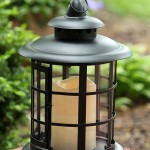How to Install an Outdoor Electrical Panel
Installing an outdoor electrical panel is a complex task that requires a significant level of electrical knowledge and experience. It is essential to prioritize safety and adhere to local building codes and regulations. Improper installation can lead to electrical hazards, damage to property, and even personal injury. Therefore, it is strongly recommended to engage a qualified electrician for this project. If you are determined to undertake the installation yourself, it is crucial to thoroughly understand the risks and follow all safety precautions meticulously.
1. Planning and Preparation
Before starting the installation, careful planning and preparation are essential. It is crucial to determine the location of the panel, taking into account factors such as proximity to the main electrical service, accessibility, and weather protection. The panel should be situated in a dry, well-ventilated area, away from sources of heat and moisture.
Next, determine the amperage and voltage requirements for the outdoor circuits. This information is crucial for selecting the appropriate size and type of panel, as well as the necessary breakers and wiring. It is also essential to obtain the necessary permits from local authorities before starting the installation.
Gather all the materials required, including the outdoor electrical panel, breakers, wiring, conduit, grounding rod, grounding wire, junction boxes, and any other necessary components.
2. Panel Installation
Once the location is determined, prepare the mounting surface. It needs to be sturdy and level. The panel should be installed at a height accessible for easy access and maintenance. Depending on the panel's size and weight, suitable mounting brackets or hardware might be necessary for secure attachment.
Connect the panel to the main electrical service. This step involves connecting the incoming power lines from the service panel to the outdoor panel's main breaker. This requires careful wiring and connection with the appropriate gauge conductors and terminal blocks.
Grounding the panel is an essential safety measure. Ensure that the panel is properly grounded by connecting a grounding rod to the panel's grounding terminal. The grounding rod should be driven into the earth to a depth specified by local codes. The grounding wire typically connects from the grounding rod to the panel's grounding bus bar.
3. Wiring and Circuit Installation
Install the breakers within the panel according to the circuit requirements. Each breaker should be properly rated for the corresponding load and connected to the appropriate wiring. When installing the wiring, use the correct gauge conductors and ensure that all connections are secure and properly terminated.
Run the necessary conduit from the panel to the various outdoor locations where electrical outlets, lights, or other equipment will be installed. Conduit provides protection for the wires and prevents damage or short circuits. It is essential to use the correct conduit size and type for the wiring and environment.
Connect the wiring to the appropriate terminals on the breakers and at the outlets or equipment. Securely connect the wires to the terminals and ensure that all connections are tight and free from any obstructions. This step requires meticulous attention to detail, ensuring that the wires are correctly connected and insulated.
4. Testing and Finalization
Before energizing the panel, it is crucial to conduct thorough testing to ensure that all connections are correct and that the electrical system is operating as expected. Test each circuit individually by turning on the corresponding breaker and checking for proper operation of the connected outlets or equipment. Conduct continuity tests to verify that all circuits are properly connected and grounded.
Once all testing is completed and the results are satisfactory, the panel can be energized. Connect the main power supply to the panel and carefully monitor the system for any unusual noises, smells, or overheating. If any issues are detected, immediately disconnect the power and investigate the cause.
After the panel is energized, ensure that all circuits are functioning correctly and that the outlets and equipment are working as expected. Make any necessary adjustments or repairs to ensure that the system is safe and reliable.
Installing an outdoor electrical panel is a challenging task that requires significant electrical knowledge and expertise. It is crucial to prioritize safety and follow all local codes and regulations. If you are unsure about any aspect of the installation process, it is highly recommended to consult a qualified electrician for assistance. Proper installation ensures a safe and reliable electrical system, while improper installation can lead to potential hazards and damage.

Installation Of Outdoors Electrical Panel Tiktok Search

Electrical Feed To Panels

An Exterior Electrical Box Benefits How To Find It

Outdoor Main Panel Basement Subpanel Box Technical Questions Sense

Installing An Electrical Service Fine Homebuilding

How To Install An Outdoor The Home Depot

Outdoor Electrical Panel Breaker Box Manufacturer Kdm
How To Seal An Outdoor Electrical Box Quora

Setting Up A Panel On The Outside Of Home

Outdoor Main Disconnect Electrical Inspections Internachi Forum







